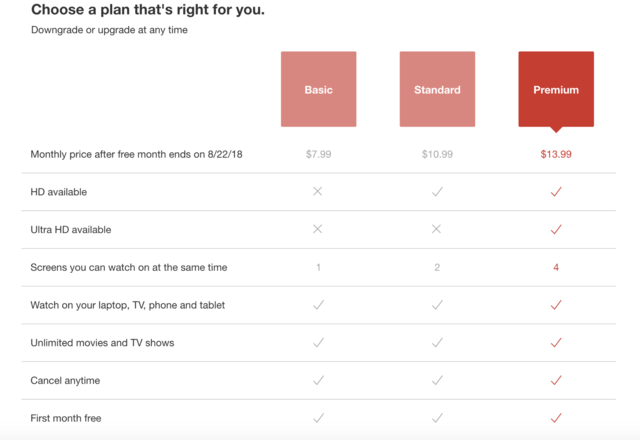
Tailoring Packaging Framework to Overall Marketing Strategy
It takes effort, planning, and company alignment to conceive and execute a product marketing strategy that works.
A digital product must speak to the end users and their pains. Knowing what they value and pinpointing those values in your marketing will resonate with prospects and foster growth in your company.
Product marketing strategy begins with defining product and brand hierarchies and articulating strong positioning and messaging. Attempting to work on packaging your product without having a clear vision of these things first will prove challenging, and potentially even impossible. But once those marketing strategy components are set in wet concrete, it is then time to work on packaging and pricing.
Product marketing strategy begins with defining product and brand hierarchies and articulating strong positioning and messaging.
First Things First
Product marketing is comprised of so many moving parts. It is the living, breathing embodiment of your product and its presence in the market, and packaging is just one piece of this puzzle. Packaging and pricing cannot be built out until the foundation is set.
The product marketing foundation consists of four main components: Brand strategy, product hierarchy, positioning and messaging, and packaging. Each of these components is fundamental to successful product marketing, and each acts as a piece to this foundational puzzle. While no single piece is more important than another, they all must fit together seamlessly to complete the picture. And, when perfectly assembled, these product marketing pieces form an arrow that points you toward your North Star.
Tips:
- Define and understand your product hierarchy
- Define your product’s buyer characteristics and positioning before diving into packaging.
Create Packages That Appeal to Buyers.
A great packaging framework helps buyers understand the value of your product or solution. It also helps them easily understand what they can buy and what they get. There are many different ways to identify the value metrics that appeal to potential buyers and create packaging frameworks that make sense to them. There is no one right answer, but by understanding what your buyer values you can craft an approach that connects to that value. Successful packaging frameworks should appeal to potential buyers in different ways, and speak to their values directly.
A great packaging framework helps buyers understand the value of your product or solution.
One easily understood example of this is to create packages that reflect different combinations of features or modules. For example, at a fast food restaurant, a sandwich, a side, and a drink might be a package, and that combination caters to a certain audience of customers. A kid’s meal might be one package, a heart healthy meal might be another. Different packages speak to different product users in different ways, and cater to their preferences.
Tips:
- Don’t feel obligated to have a certain number of packages, some products only have one, with a sliding scale of pricing. It is different for every digital product.
- Continuously refine your packaging as your base grows and their values change.
Package Your Product With Value Metrics in Mind.
Once packages are created and in place, pricing them can be tricky. It varies dramatically from product to product. There is no right answer to the number of tiers, the right prices, or how to go about publishing (if you choose to at all). However, in my experience with packaging, one truth remains consistent from product to product, and that is to price based on value metrics.
Determining value metrics can be tricky as well. Some products are packaged based on features as described earlier, others by number of users, others by consumption (such as amount of resources used or data stored). It is important to look beyond surface level to identify what is important to your company.
Tips:
- Packaging is a wash, rinse, repeat exercise. It is not a one and done effort. Figure out what makes sense to your buyers and test out your packaging. There are experts, like Price Intelligently, that work to find your product’s pricing sweet spot.
- Challenge your team to look beyond the number of users as the lever of the value metric. Each user is extremely unique, so evaluate those unique circumstances and set value metrics accordingly.
Be Strategic About Publishing Online.
Presenting packaging and pricing online depends on whether or not the intent of the site is for visitors to convert or to generate lead sources. If the intent is to convert, then good packaging should remove friction and make it easy for the buyer to understand what they are buying, and enable them to buy. If the intent is to generate leads, then there is a potential opportunity to educate them on how they can buy but still require them to “contact us for pricing” or “get in touch to learn more.”
This strategy can be implemented when a product has custom pricing or when the product is more complex. Greenlight Guru, a Quality Management Software for the medical device industry, has a CTA button that says “See a demo”, and then leads to a form where prospects fill in their information. Since Greenlight Guru’s product is more complex and more specific, it is important to engage in conversation with the potential buyer first. Companies with less complex offerings or packages, like Netflix for example, can display pricing on the product site.

Tips:
- Provide pricing and packaging information that aligns with the intention of your product site.
- Pricing information provided on your site may vary depending on the complexity of your product or your pricing structure.
Packaging is a critical component of a successful product marketing effort, but it is just one component of the complex puzzle that is product marketing. The goal of packaging is to make your buyers’ lives easier, and create easily understood, valuable bundles of product features. If you follow these tips to a successful packaging framework then rest assured you have a strong foundation, but that does not mean it is time to sit back and relax — packaging is an ongoing process that will continue to change as your company changes and grows.



